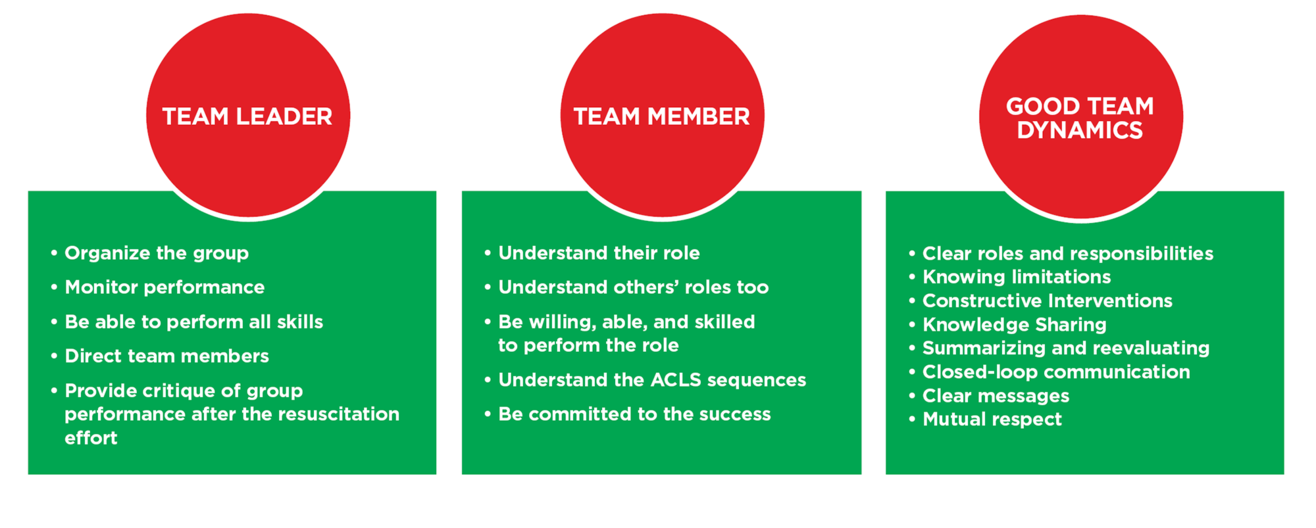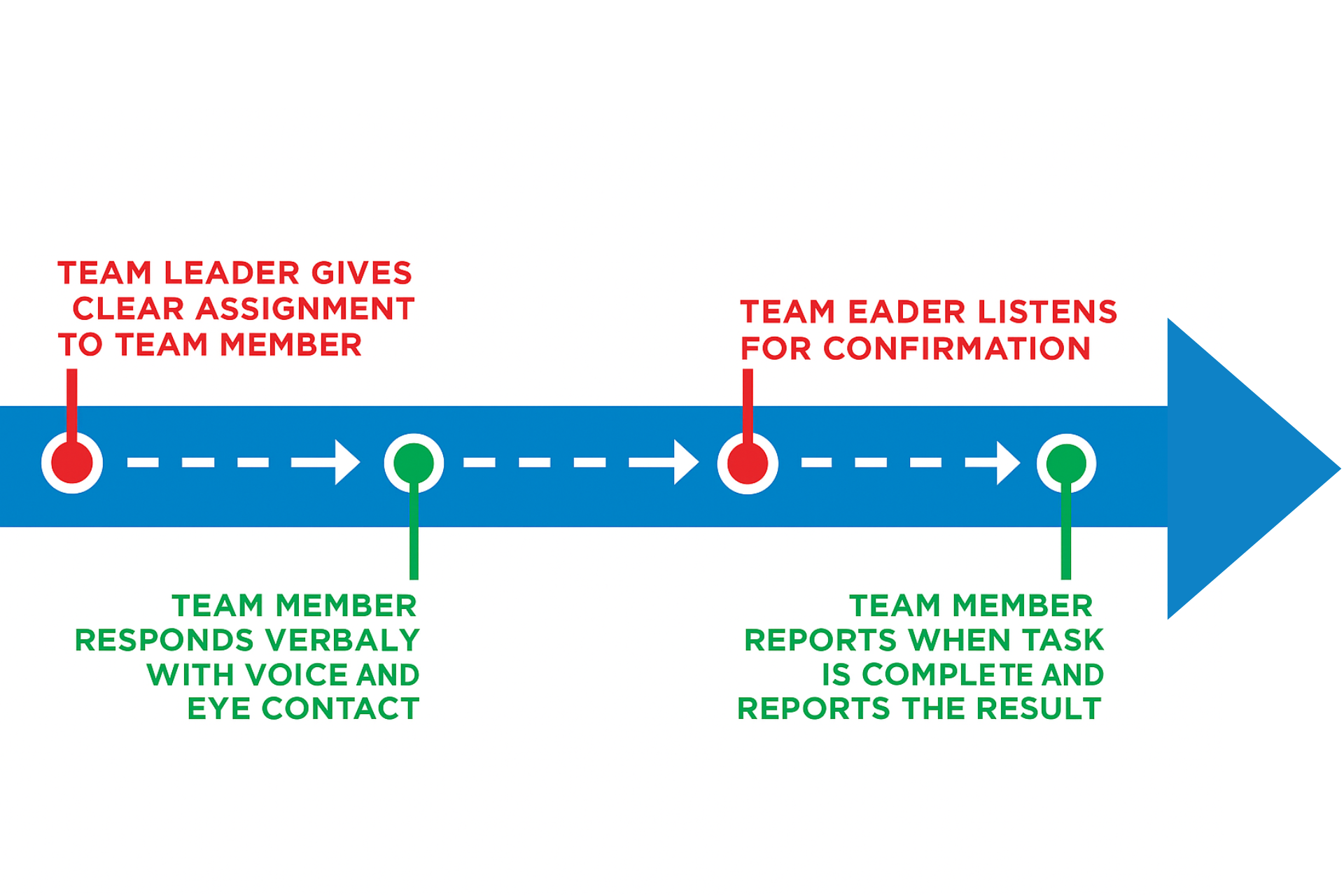The Resuscitation Team
It is absolutely critical for teams to achieve effective dynamics during resuscitation, as highlighted by the ILCOR guidelines for ACLS. Any first rescuer to a patient may be forced to perform CPR alone when outside a normal health care facility. In a hospital, however, dozens of providers can be present at a patient’s room within a moment’s notice. By organizing team members into quick and efficient roles, every provider can participate effectively in ACLS. By assigning each provider with a specific role during events of resuscitation, an ideal team structure can be achieved. Several team members and a team leader are required.

Table 4
It is essential to develop clear communication between leaders and members.
Understanding your own clinical limitations is important. When dealing with resuscitation, it is always advised to make use of skills you already have, rather than trying to experiment with new ones that you have yet to master. Do not perform tasks that you are not sure you will complete successfully. If you need help with your role, call for help early, especially when you are dealing with the care of another individual. There must be mutual respect, constructive criticism, knowledge sharing, and a debriefing between the team members for an ideal resuscitation.

Figure 18
Closed-Loop Communication
